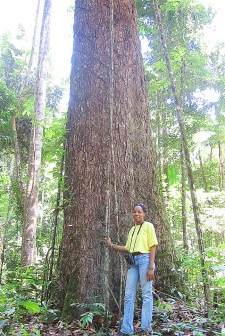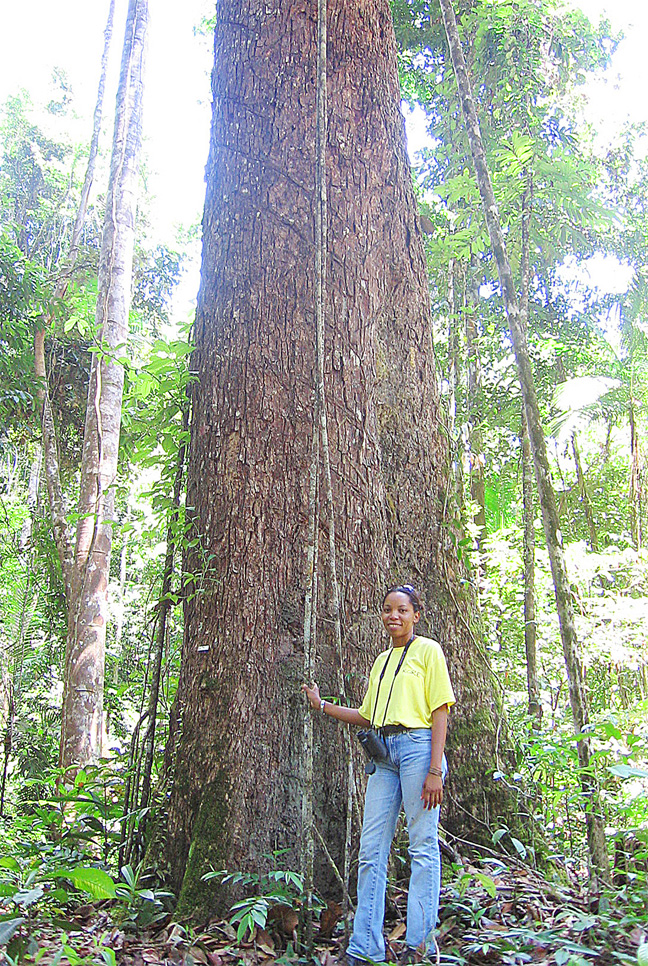![]() Bulletwood belongs to the Sapodilla plant family (Sapotaceae) and is the source of balata gum, the coagulated latex of the tree. In the 17th and 18th centuries the wood of this tree was used in the construction of stellings, and in the late 19th century the first commercial quantities of balata were exported from then British Guiana, representing one of the first forest products to earn foreign exchange for the country.
Bulletwood belongs to the Sapodilla plant family (Sapotaceae) and is the source of balata gum, the coagulated latex of the tree. In the 17th and 18th centuries the wood of this tree was used in the construction of stellings, and in the late 19th century the first commercial quantities of balata were exported from then British Guiana, representing one of the first forest products to earn foreign exchange for the country.
During the First World War and post-war period, demand for balata reached its peak as it was used as an alternative to natural rubber (Hevea brasilensis). Later in the 20th century, most of the exported balata went to the United Kingdom where it was used for the outer covering of golf balls and machine belting. However, demand on the world market began to slow down with the advent of synthetic products, and today it is very low. A relatively small quantity is used by the local market for the manufacture of curios and ornaments.

Balata is traditionally utilised by Amerindian communities on a domestic scale for caulking boats and creative carving. The tree also produces edible fruits. This species is recognised for producing high-grade timber which is suitable for construction purposes, bridges, sleepers, hydraulic works, carpentry, floorings, shingles, and more. However, it is protected by law, and thus, no tree should be felled unless it is dead. Additionally, special permission is required from the Guyana Forestry Commission in order to fell Bulletwood trees on a commercial scale.

